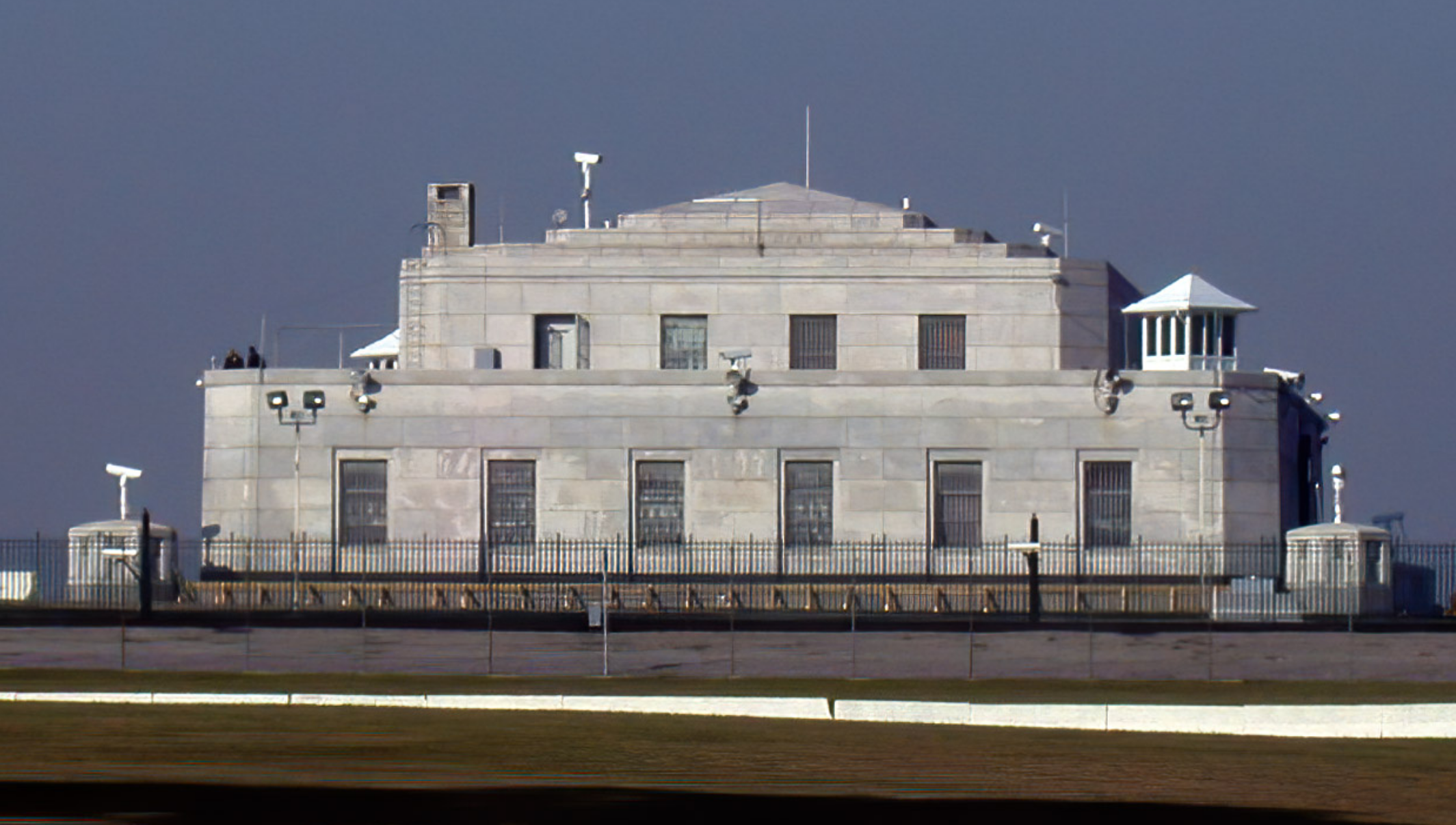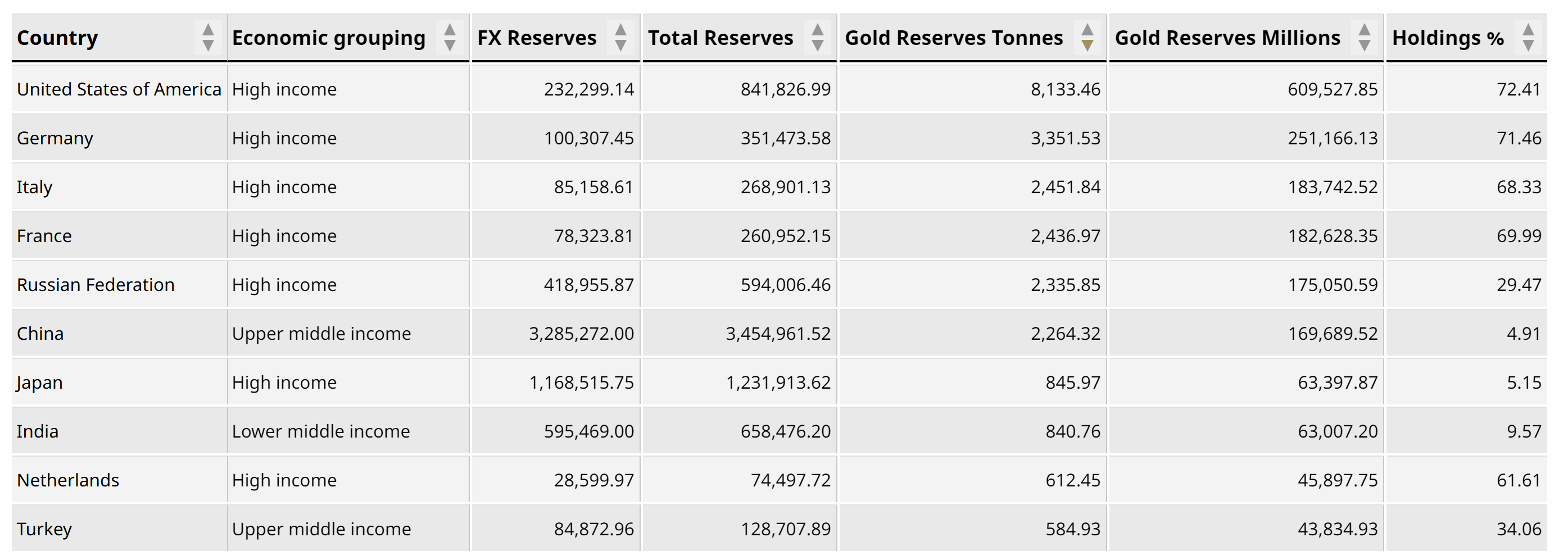FortKnox: the US Gold Reserve

In this article, Nithisha CHALLA (ESSEC Business School, Grande Ecole Program – Master in Management (MiM), 2021-2024) explores the history of Fort Knox, its economic significance, the myths surrounding it, and its enduring importance.
Introduction
The origins of Fort Knox date back to the 1930s during the Great Depression, a period of severe economic downturn in the United States (U.S.). In 1936, the U.S. government constructed the facility in response to the need for a secure location to house the country’s growing gold reserves, which were essential to backing the dollar under the gold standard. The construction was overseen by the U.S. Treasury Department, and the fort was designed with cutting-edge security for its time, utilizing 16,000 cubic feet of granite, 750 tons of reinforced steel, and 4,200 cubic yards of concrete.
The figure below shows the Fort Knox facility in Kentucky.
Fort Knox

Source: Wikipedia
The legislative foundation of Fort Knox’s role in safeguarding America’s wealth comes from the Gold Reserve Act of 1934. This act established the control and management of the nation’s gold to stabilize the economy. The Treasury’s decision to centralize gold in Fort Knox allowed for more efficient management and bolstered public confidence in the nation’s monetary policy. The fort’s massive, highly fortified structure made it an impenetrable vault, setting a global standard for secure storage facilities.
The Role of Fort Knox in U.S. Financial History
During the era of the gold standard, Fort Knox was critical in maintaining economic stability, as the gold stored within it provided a foundation for the dollar. This system allowed the U.S. government to prevent inflation by limiting the amount of money in circulation to the amount of gold held in reserves, fostering economic stability. Fort Knox’s immense reserves helped ensure that the dollar was trusted globally, making it a linchpin in both national and international finance.
The gold standard era came to an end in 1971, under President Nixon, who made the historic decision to cease gold convertibility, effectively transitioning the U.S. to a fiat currency system. This policy shift changed Fort Knox’s role, as gold was no longer used to back currency. Nonetheless, Fort Knox’s gold holdings continued to serve as a reserve asset, a sign of wealth and security, giving the government a financial safeguard in times of economic uncertainty.
According to 2021 statistics by US funds, the top 10 central banks with the largest gold reserves have remained mostly unchanged for the last few years. The United States holds the number one spot with over 8,000 tonnes of gold in its vaults – nearly as much as the next three countries combined – and accounting for 79% of total reserves.
The below figure shows the Top 10 countries with the highest gold reserves (US$ Million) in the second quarter of 2024.
Top 10 countries with highest gold reserves

Source: Central Banks, Federal Reserve Bank of St. Louis, International Monetary Fund, World Bank, World Gold Council
Security Measures and Infrastructure at Fort Knox
- Military Presence and Physical Security: Fort Knox is protected by the U.S. Army, with soldiers and highly trained security personnel safeguarding the facility. There are intense security measures, including 24/7 surveillance, motion detectors, alarms, and physical barriers.
- Advanced Technologies: Though specific details are classified, Fort Knox is believed to have some of the most advanced technology for security, possibly including biometric access controls, reinforced gates, and even underground passages. Its security has inspired legends and pop culture references (such as the James Bond film “Goldfinger”), adding to its mystique.
- Limited Access: Only a few individuals have ever entered the main vault. In 1974, several members of Congress and journalists were invited to see the vaults and confirm the gold, which was an unusual event to dispel rumors about the gold’s existence.
The Contents of Fort Knox
- Gold Reserves: Currently in 2024, Fort Knox holds the highest gold reserves at approximately 8,133.46 tonnes, which make up about 72.4 percent of the US total reserves. At today’s gold prices, this would be worth hundreds of billions of dollars.
- Other Assets: While gold is the primary asset stored, the vault has also been used to store other valuable items in times of crisis, such as the U.S. Constitution, Declaration of Independence, and other historical documents during World War II for safekeeping.
- Gold’s Role as a Reserve Asset: Even though the U.S. operates on a fiat currency system, the gold at Fort Knox acts as a safeguard, providing the country with a tangible asset that could be utilized or sold in extreme economic crises.
Economic and Financial Relevance Today
Despite the shift to a fiat currency system, Fort Knox’s gold reserves continue to provide financial security. Gold remains an important asset because it is believed to offer a hedge against inflation as gold’s value tends to increase during inflationary periods as it preserves purchasing power (see Erb and Harvey (2013 and 2024) for a discussion). Even in a modern economic context, where paper currency is not directly backed by gold, large gold reserves contribute to economic credibility on the global stage.
Gold’s role as a stable asset makes it valuable in times of economic volatility. During financial crises or market downturns, governments and investors alike often turn to gold as a safeguard. For the U.S., Fort Knox remains a testament to financial prudence and a guarantee of economic resilience.
Conclusion
In conclusion, Fort Knox stands as a symbol of American financial strength, security, and heritage. Though its role has evolved over the years, it continues to be a key reserve asset, both financially and symbolically. The facility’s rich history, robust security, and enduring legacy contribute to its iconic status as one of the most secure locations on earth. As an economic and cultural symbol, Fort Knox reflects the resilience and security of the U.S. economy, holding a significant place in both national and global finance.
Why should I be interested in this post?
Gold has been a key financial asset for centuries, acting as a store of value, a hedge against inflation, and a safe-haven asset during economic crises. Understanding its investment options helps students grasp fundamental market dynamics and investor behavior, especially during periods of economic uncertainty.
Related posts on the SimTrade blog
▶ Nithisha CHALLA History of Gold
▶ Nithisha CHALLA Gold resources in the world
Useful resources
Academic research
Erb, C.B., and C.R. Harvey (2013) The Golden Dilemma. Financial Analysts Journal 69 (4): 10–42.
Erb, C.B., and C.R. Harvey (2024) Is there still a Golden Dilemma. Working paper.
Data
World Gold Council Gold Reserves by Country
US Funds Top 10 Countries with Largest Gold Reserves
Other
Wikipedia Gold
Wikipedia Fortknox
About the author
The article was written in November 2024 by Nithisha CHALLA (ESSEC Business School, Grande Ecole Program – Master in Management (MiM), 2021-2024).
